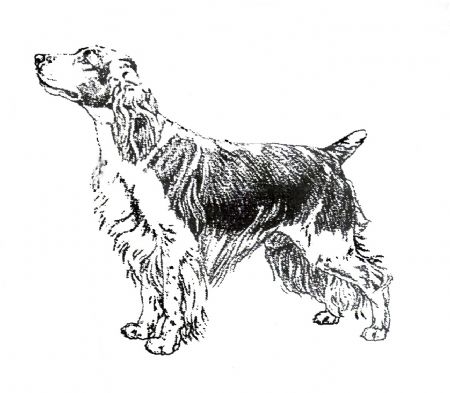Breed Standard

GENERAL APPEARANCE: Symmetrical, compact, not leggy, obviously built for endurance and hard work. Quick and active mover, displaying plenty of push and drive.
CHARACTERISTICS: Very ancient and distinct breed of pure origin. Strong, merry and very active.
TEMPERAMENT: Kindly disposition, showing no aggression or nervousness.
HEAD & SKULL: Skull of proportionate length, slightly domed, clearly defined stop, well chiselled below the eyes. Muzzle of medium length, straight, fairly square. Nostrils well developed, brown or dark.
EYES: Hazel or dark, medium size, not prominent, nor sunken, nor showing haw.
EARS: Set moderately low and hanging close to cheeks. Comparatively small and gradually narrowing towards tip and shaped somewhat like a vine leaf.
MOUTH: Jaws strong with a perfect, regular and complete scissor bite, ie. upper teeth closely overlapping the lower teeth and set square to the jaws.
NECK: Long, muscular, clean in throat, neatly set into sloping shoulders.
FOREQUARTERS: Forelegs of medium length, straight, well boned.
BODY: Not long, strong and muscular. Deep brisket, well sprung ribs. Length of body should be proportionate to length of leg. Loin muscular and slightly arched. Well coupled.
HINDQUARTERS: Strong and muscular, wide and fully developed with deep second thighs. Hindlegs well boned, hocks well let down, stifles moderately angled, neither turning in or out.
FEET: Round, with thick pads. Firm and cat like, not large or spreading.
TAIL: Well set on and low, never carried above level of back, preferably docked. Lively in action.
GAIT/MOVEMENT: Smooth, powerful, ground covering action; driving from rear.
COAT: Straight or flat, silky texture, dense, never wiry or wavy. Curly coat highly undesirable. Forelegs and hindlegs above the hocks moderately feathered, ears and tail lightly feathered.
COLOUR: Rich red and white only.
SIZE: Approximate height: Dogs 48 cm (19 ins) at withers; Bitches 46 cms (18 ins)
FAULTS: Any departure from the foregoing points should be considered a fault and the seriousness with which the fault should be regarded should be in exact proportion to its degree.
NOTE: Male animals should have two apparently normal testicles descended into the scrotum.
